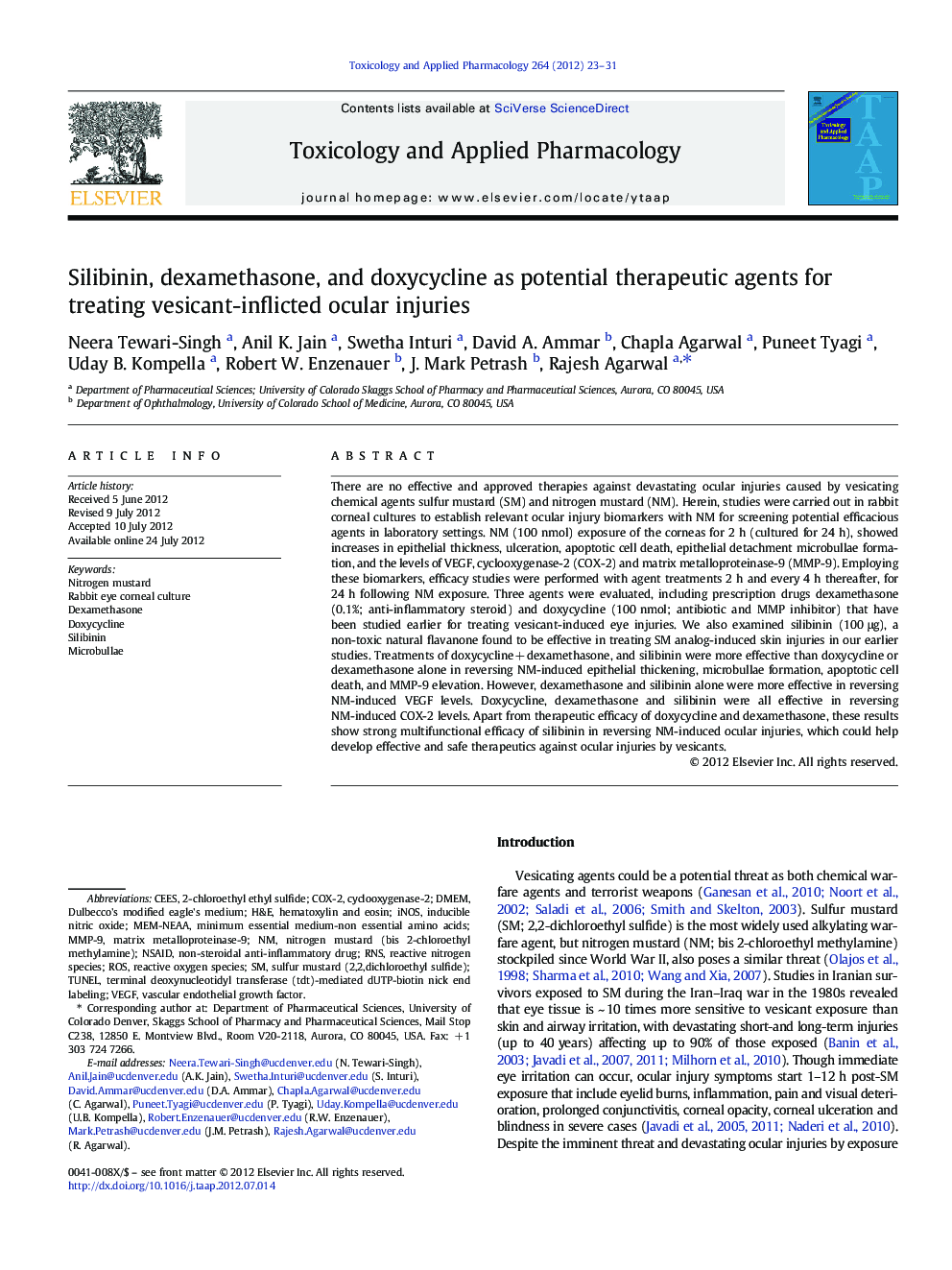| کد مقاله | کد نشریه | سال انتشار | مقاله انگلیسی | نسخه تمام متن |
|---|---|---|---|---|
| 2569131 | 1128512 | 2012 | 9 صفحه PDF | دانلود رایگان |

There are no effective and approved therapies against devastating ocular injuries caused by vesicating chemical agents sulfur mustard (SM) and nitrogen mustard (NM). Herein, studies were carried out in rabbit corneal cultures to establish relevant ocular injury biomarkers with NM for screening potential efficacious agents in laboratory settings. NM (100 nmol) exposure of the corneas for 2 h (cultured for 24 h), showed increases in epithelial thickness, ulceration, apoptotic cell death, epithelial detachment microbullae formation, and the levels of VEGF, cyclooxygenase-2 (COX-2) and matrix metalloproteinase-9 (MMP-9). Employing these biomarkers, efficacy studies were performed with agent treatments 2 h and every 4 h thereafter, for 24 h following NM exposure. Three agents were evaluated, including prescription drugs dexamethasone (0.1%; anti-inflammatory steroid) and doxycycline (100 nmol; antibiotic and MMP inhibitor) that have been studied earlier for treating vesicant-induced eye injuries. We also examined silibinin (100 μg), a non-toxic natural flavanone found to be effective in treating SM analog-induced skin injuries in our earlier studies. Treatments of doxycycline + dexamethasone, and silibinin were more effective than doxycycline or dexamethasone alone in reversing NM-induced epithelial thickening, microbullae formation, apoptotic cell death, and MMP-9 elevation. However, dexamethasone and silibinin alone were more effective in reversing NM-induced VEGF levels. Doxycycline, dexamethasone and silibinin were all effective in reversing NM-induced COX-2 levels. Apart from therapeutic efficacy of doxycycline and dexamethasone, these results show strong multifunctional efficacy of silibinin in reversing NM-induced ocular injuries, which could help develop effective and safe therapeutics against ocular injuries by vesicants.
► Established injury biomarkers in rabbit corneal culture with nitrogen mustard (NM)
► This NM model is a cost effective system to evaluate and optimize therapeutics.
► Show that doxycycline and dexamethasone reduce NM-caused ocular injuries
► Demonstrate that silibinin effectively reverses NM-caused ocular injury endpoints
► Suggest optimization of identified agents against ocular injuries by vesicants
Journal: Toxicology and Applied Pharmacology - Volume 264, Issue 1, 1 October 2012, Pages 23–31